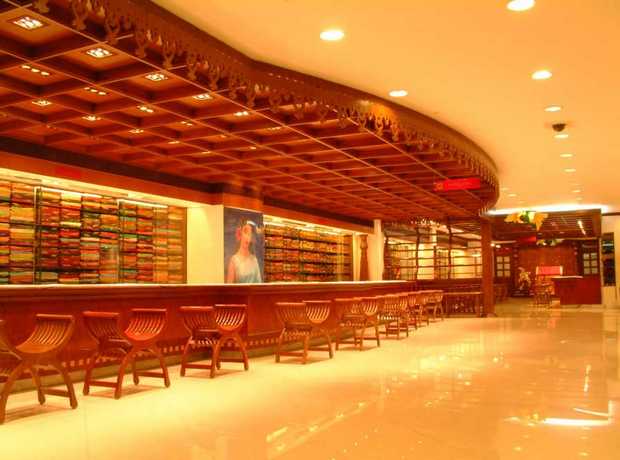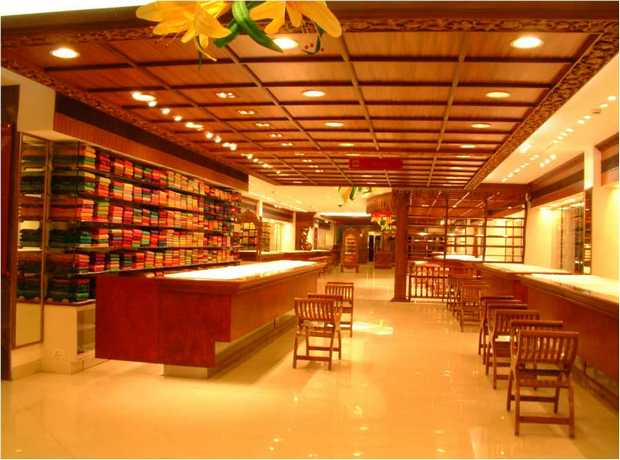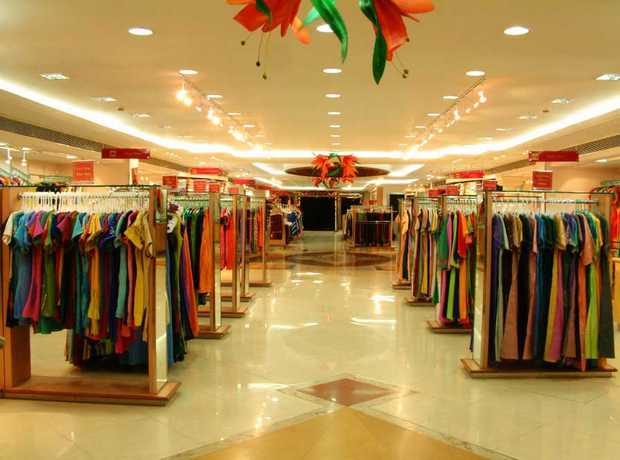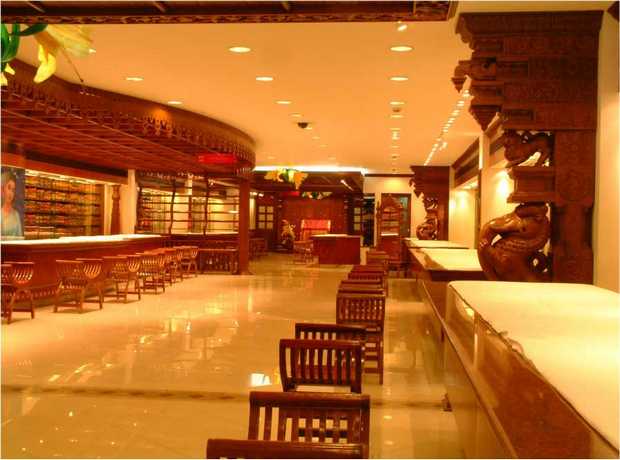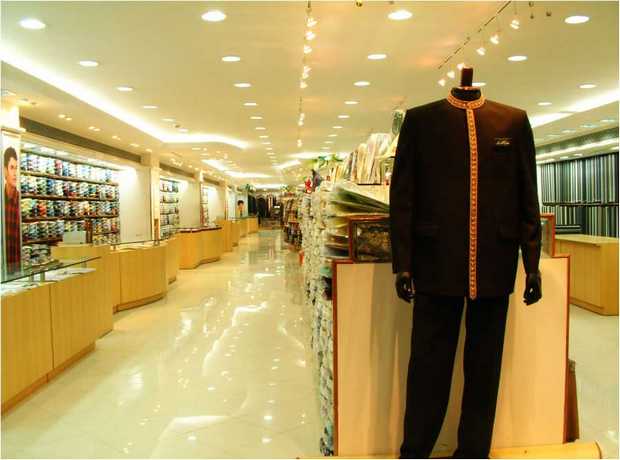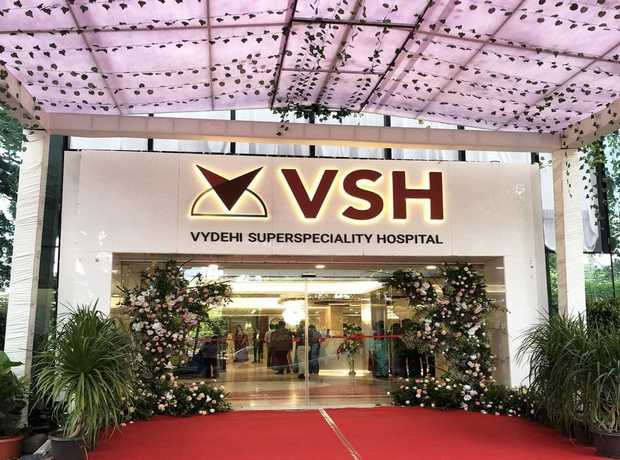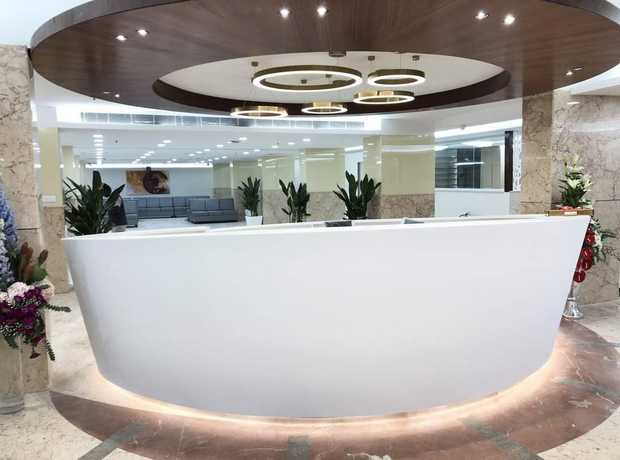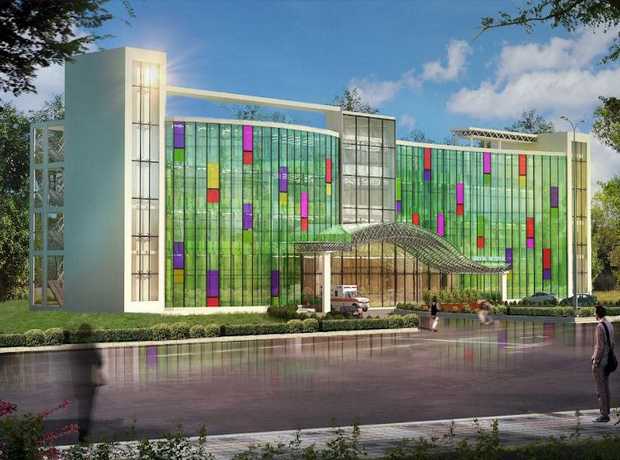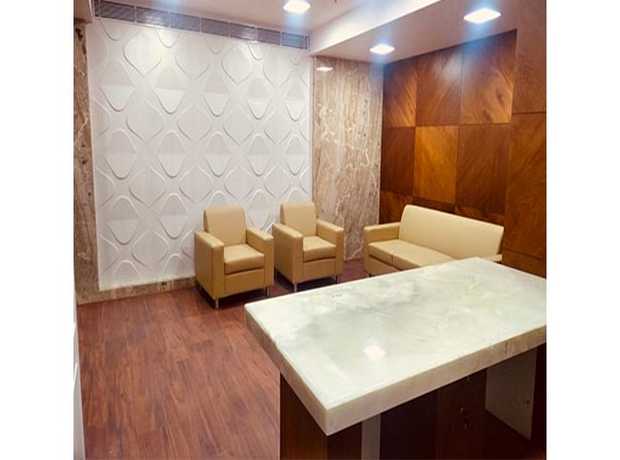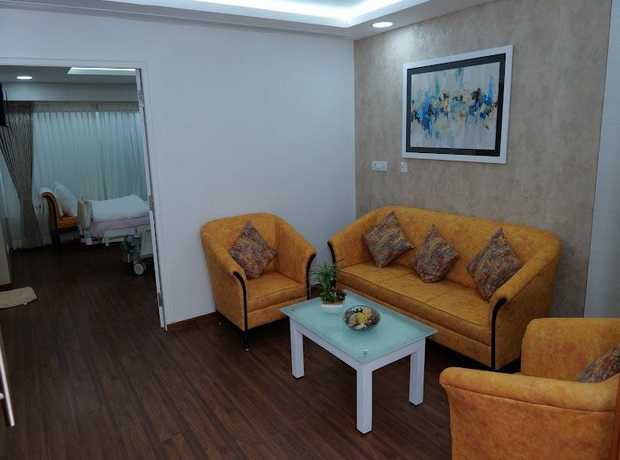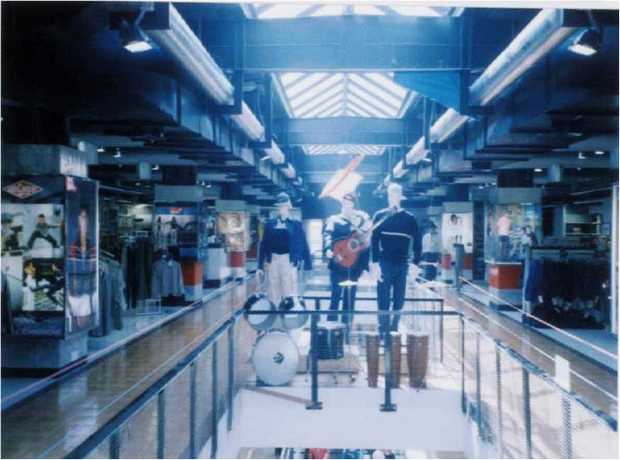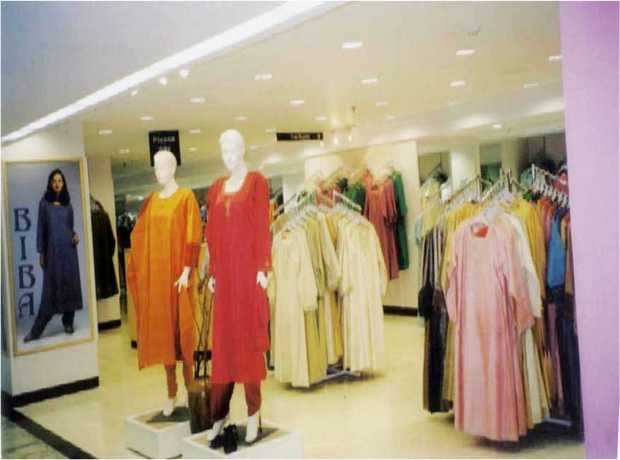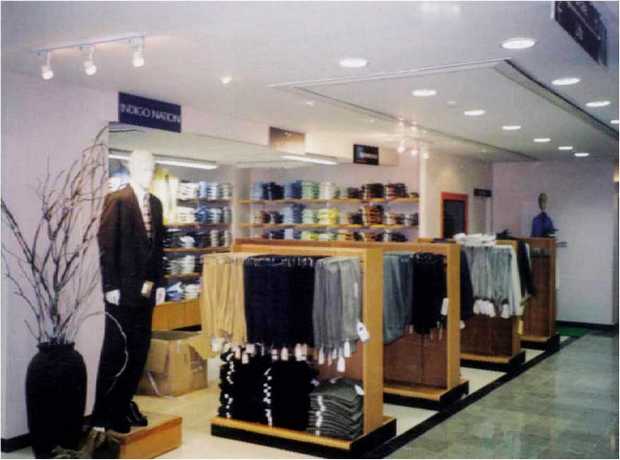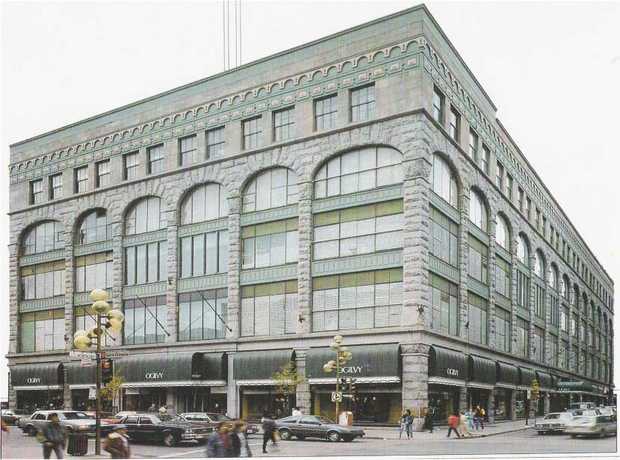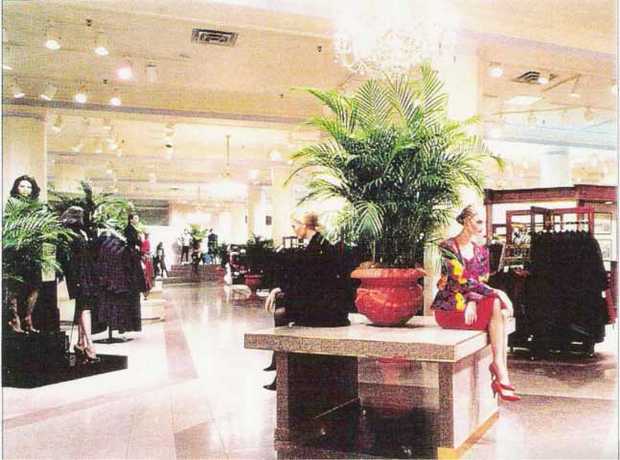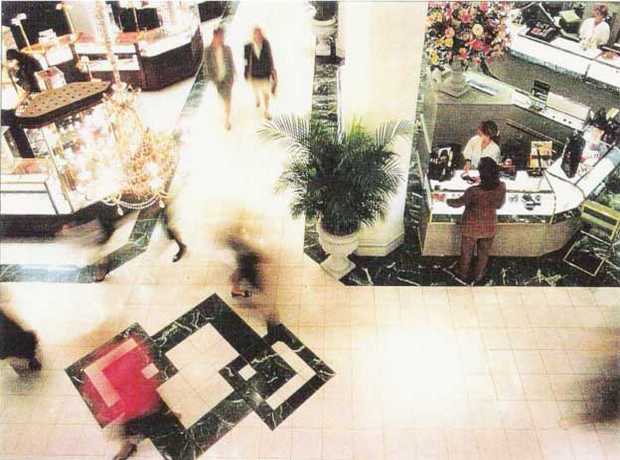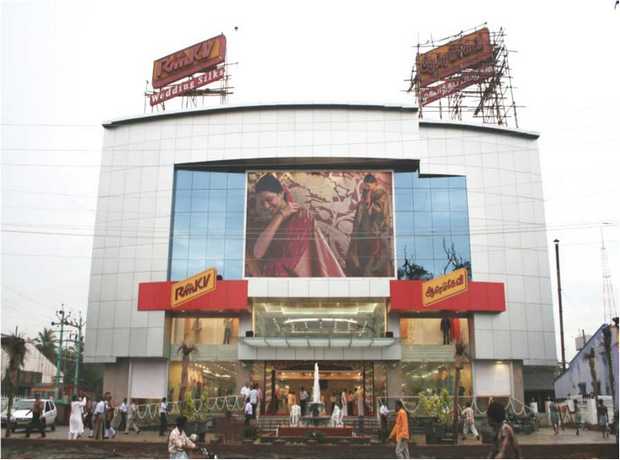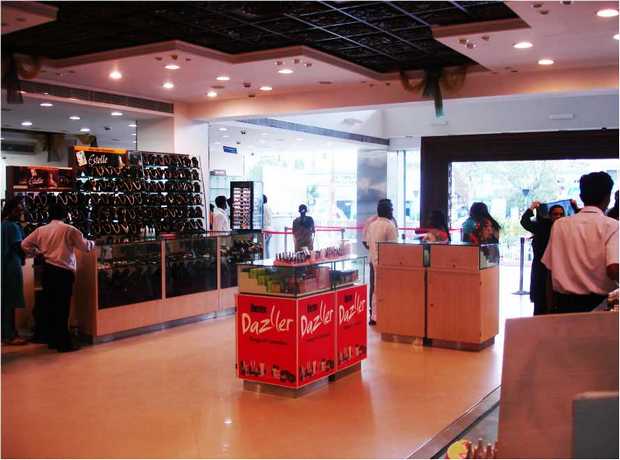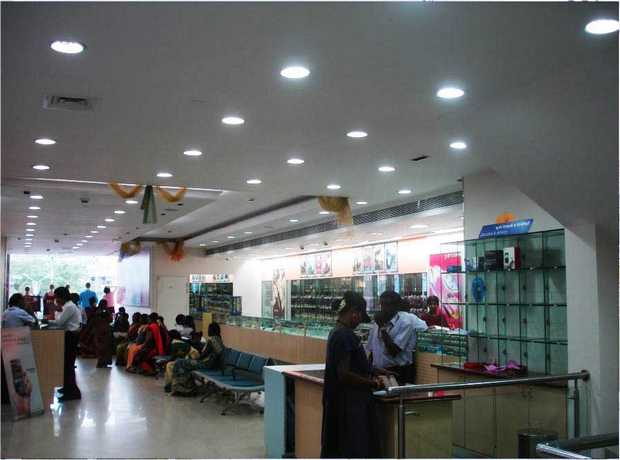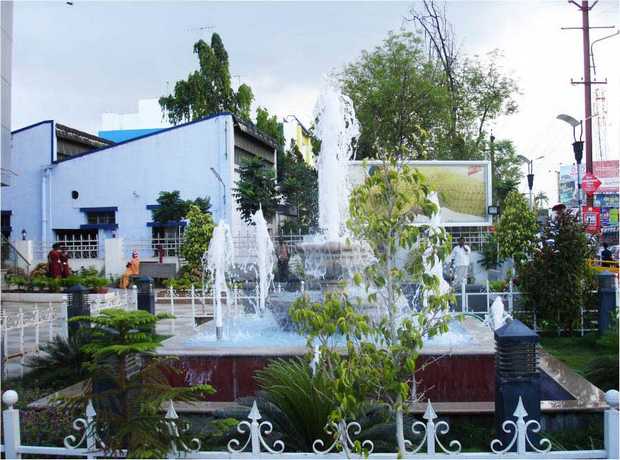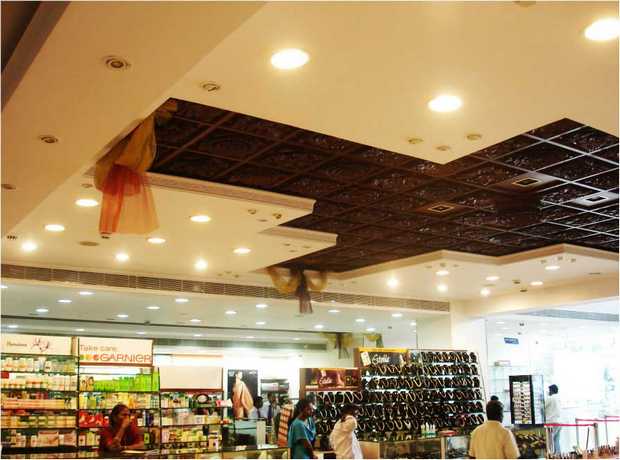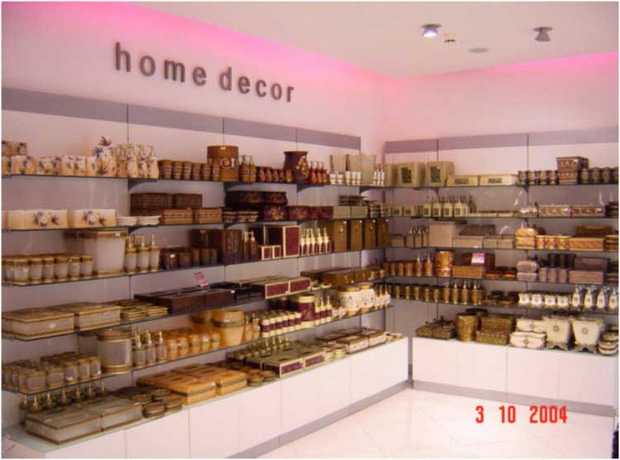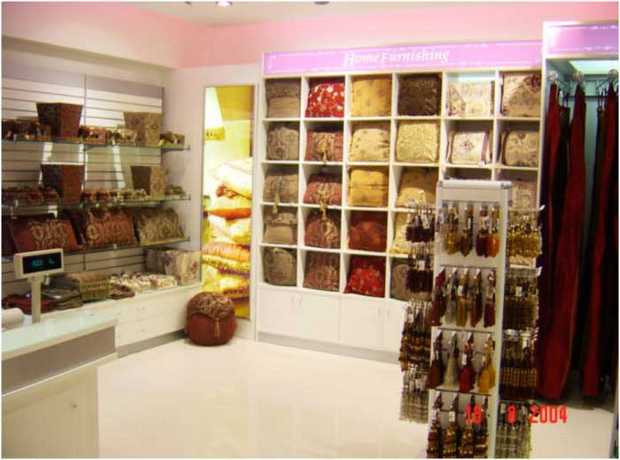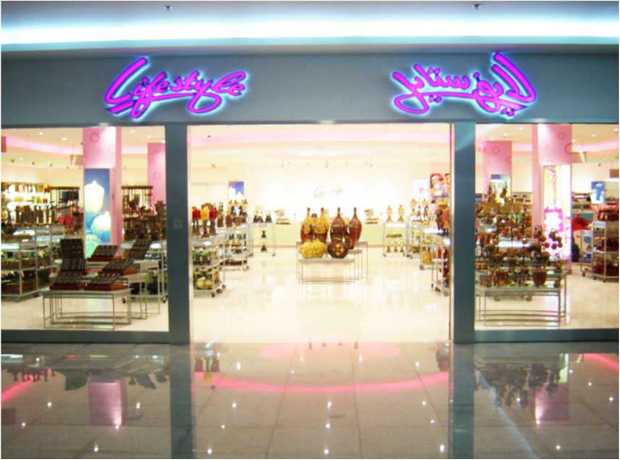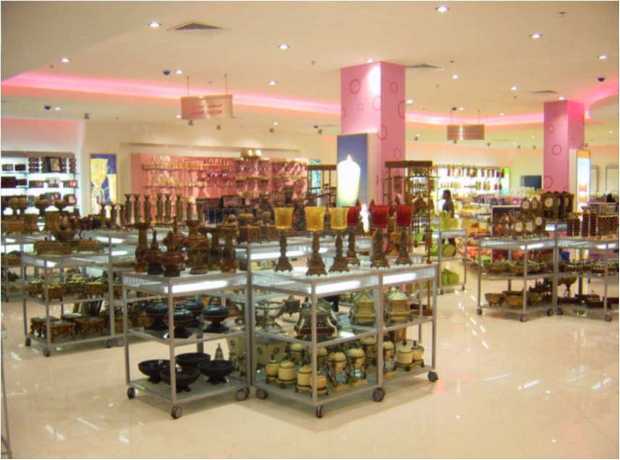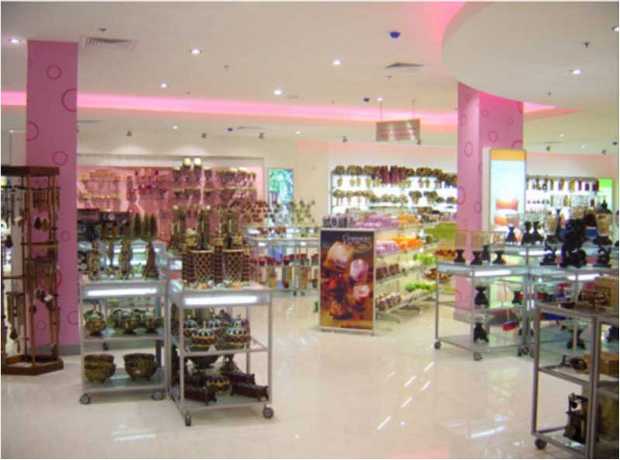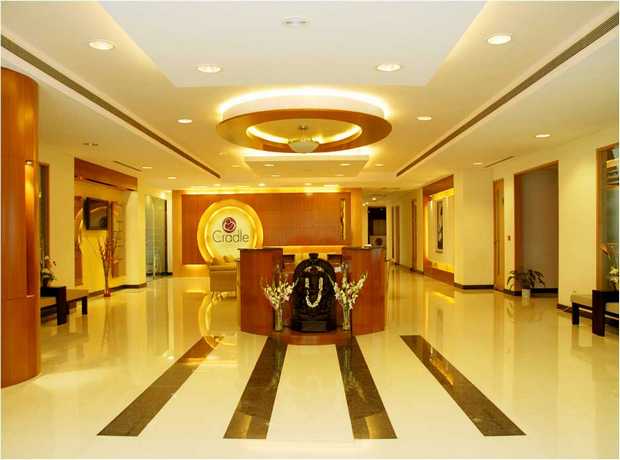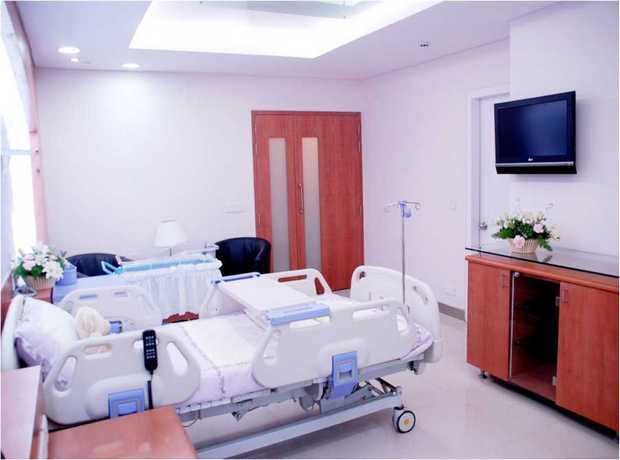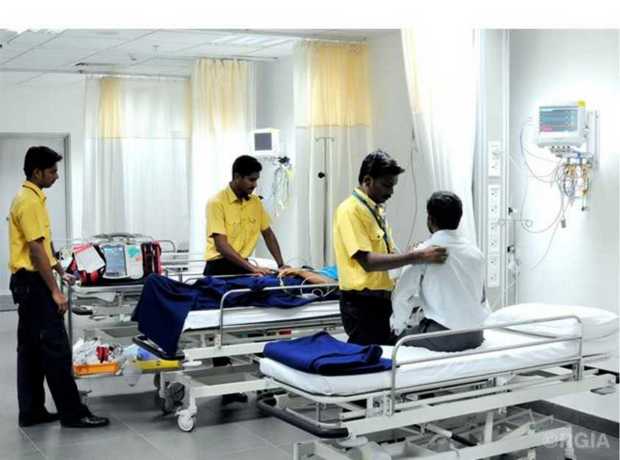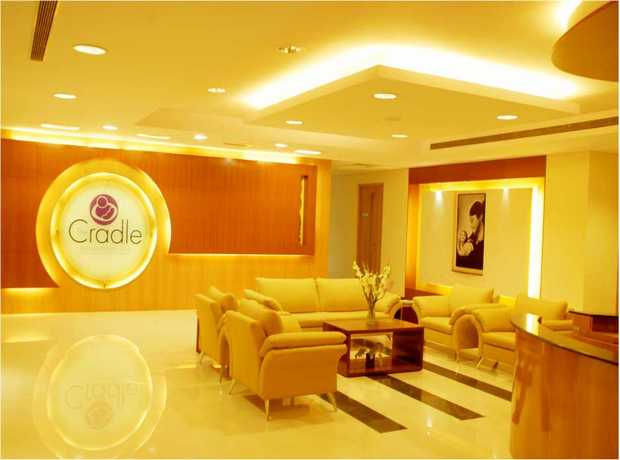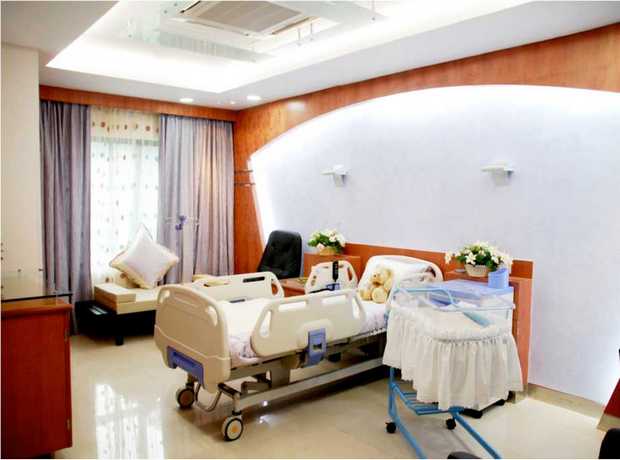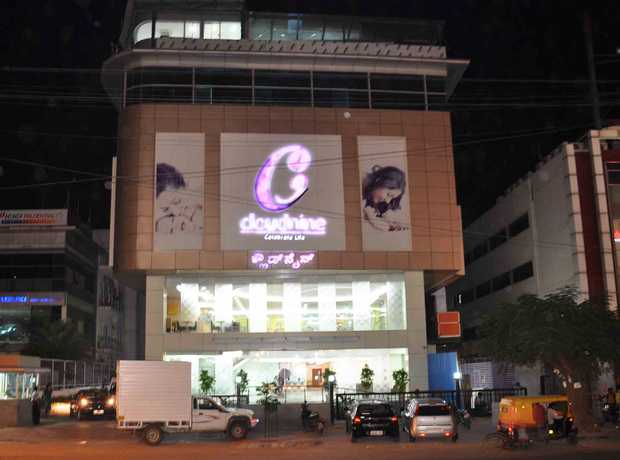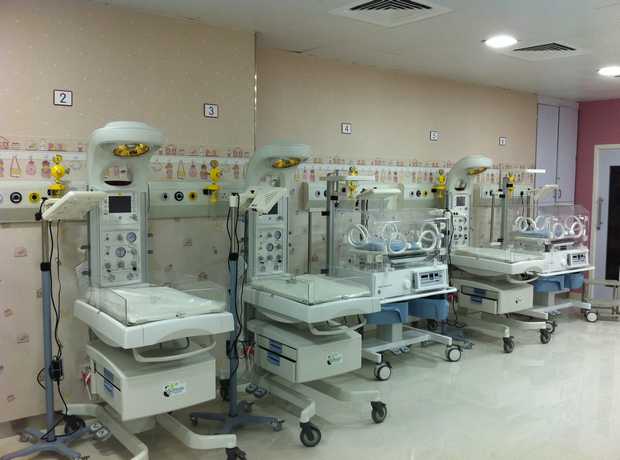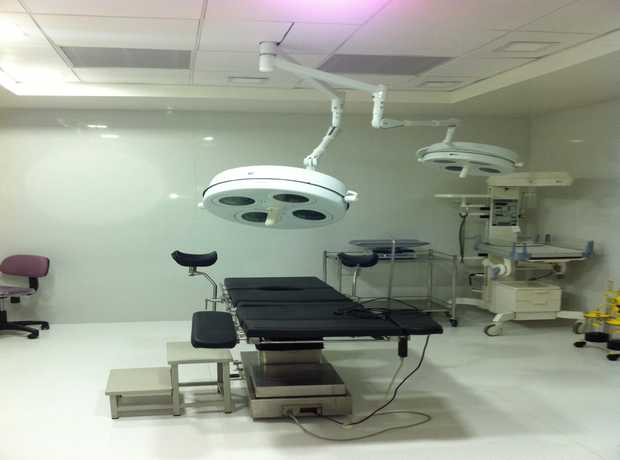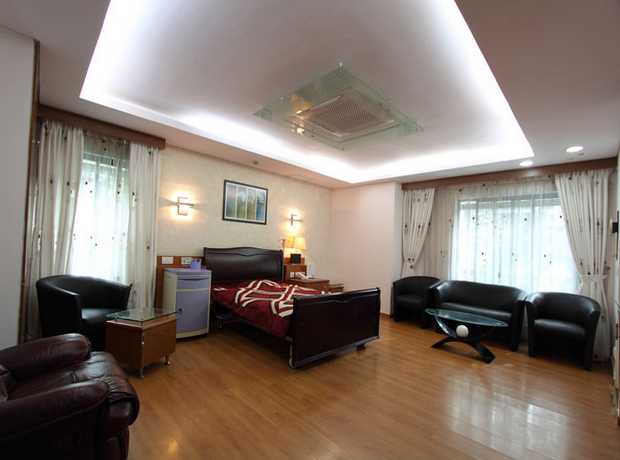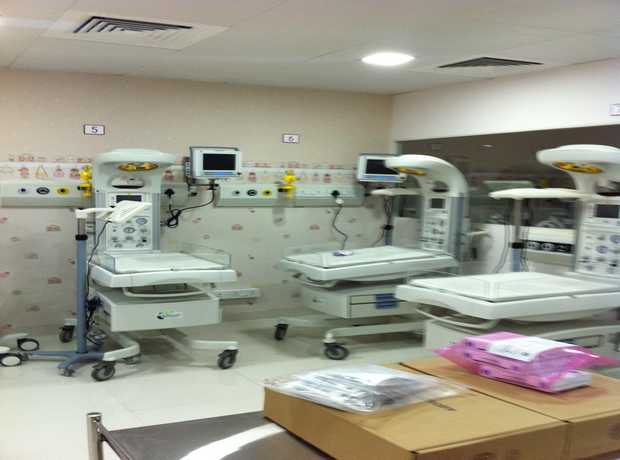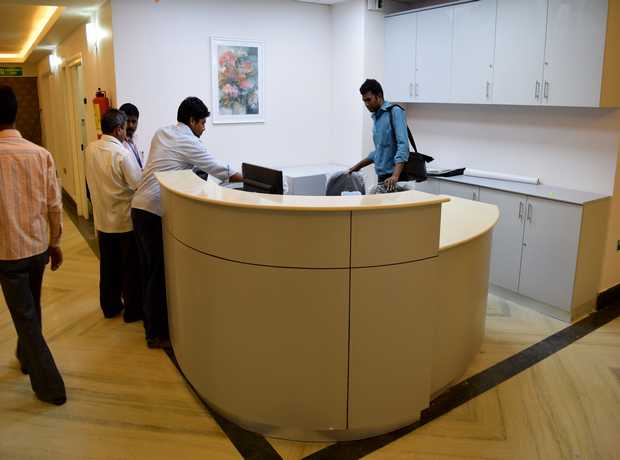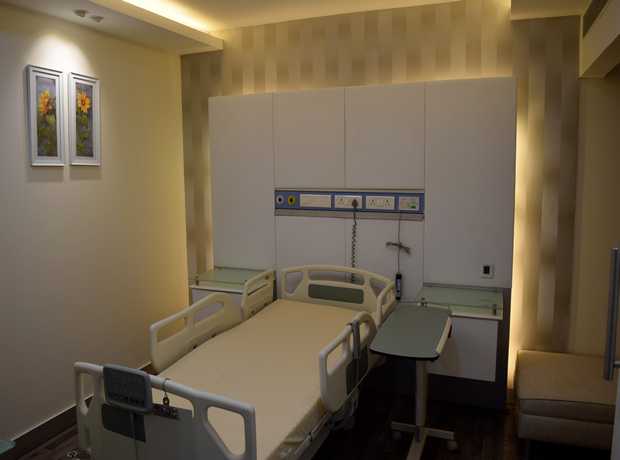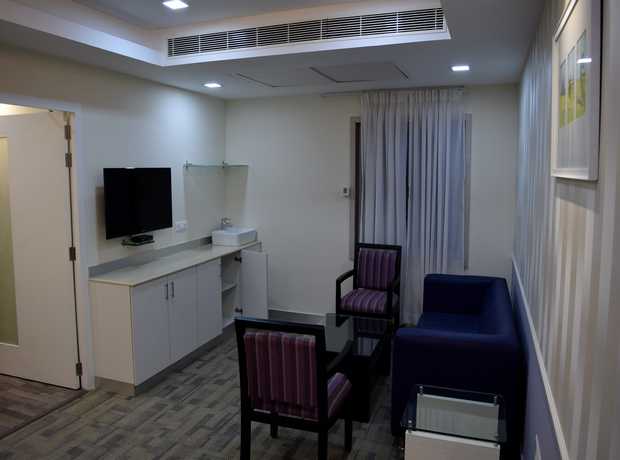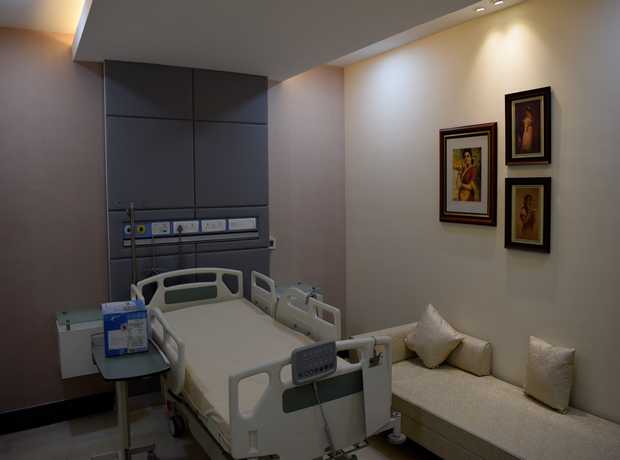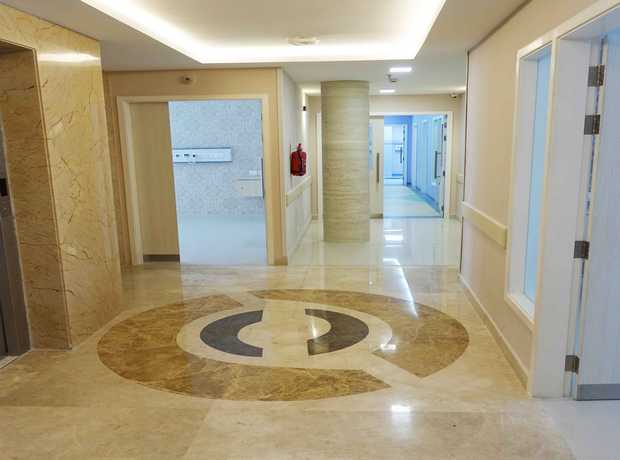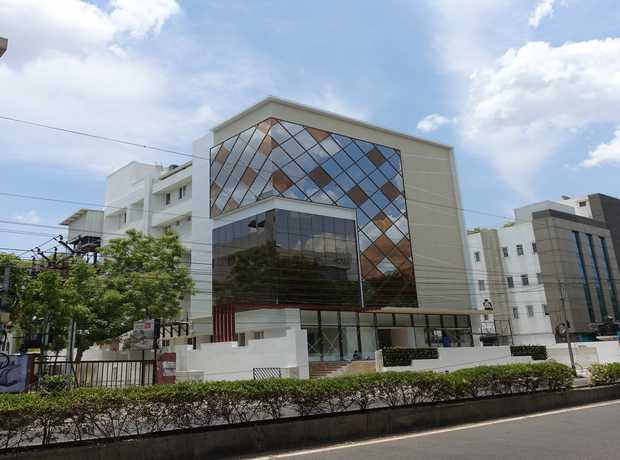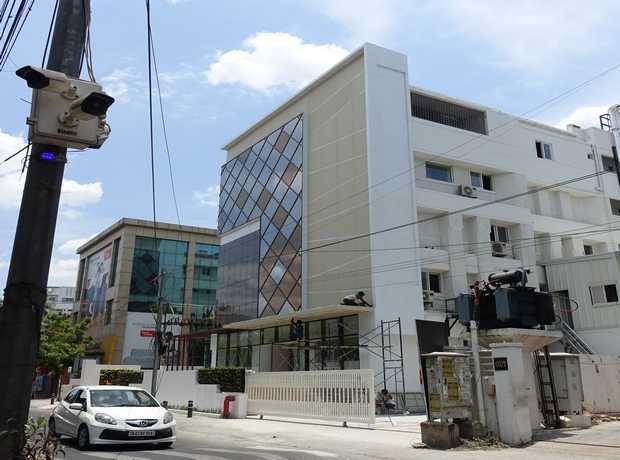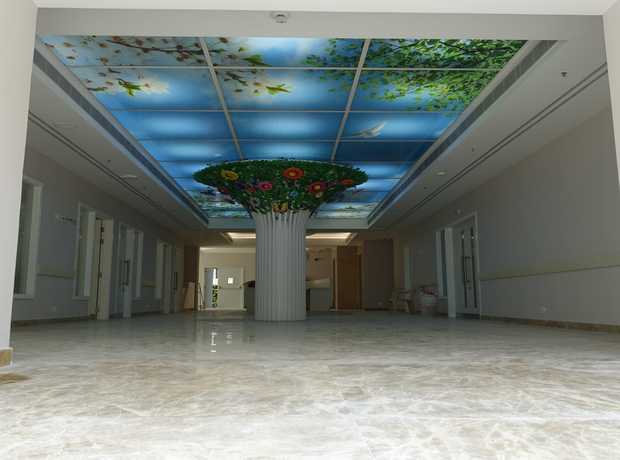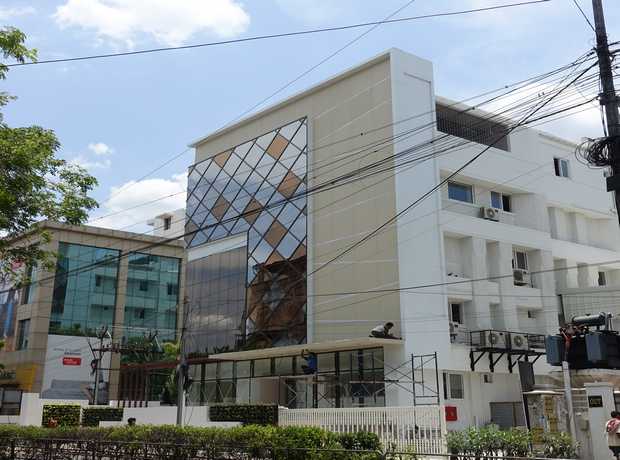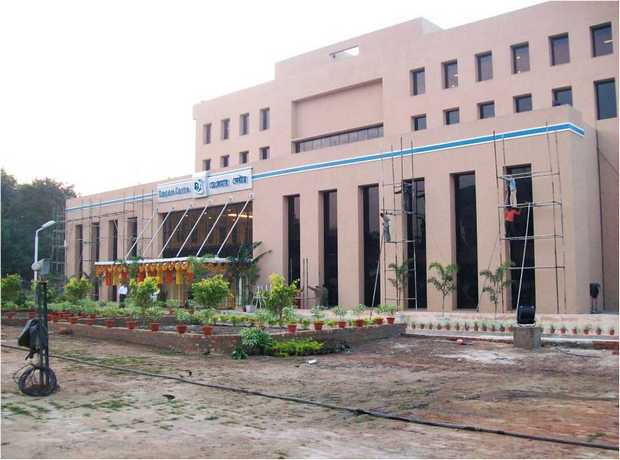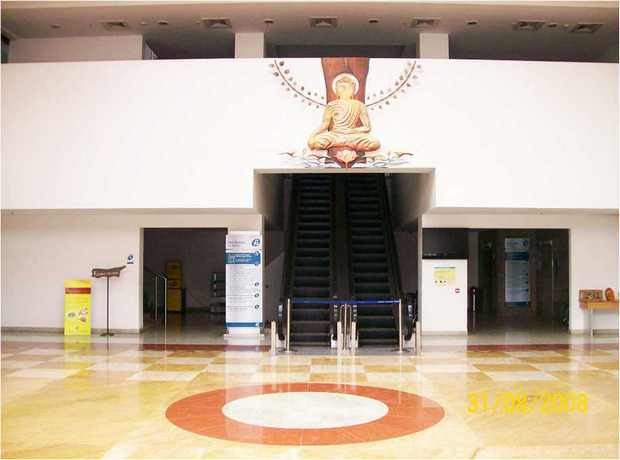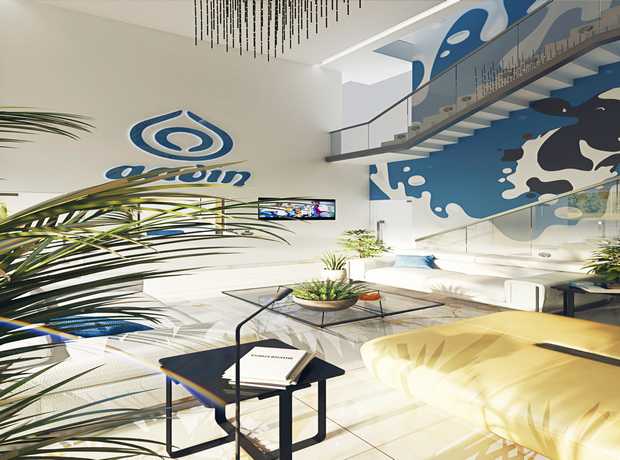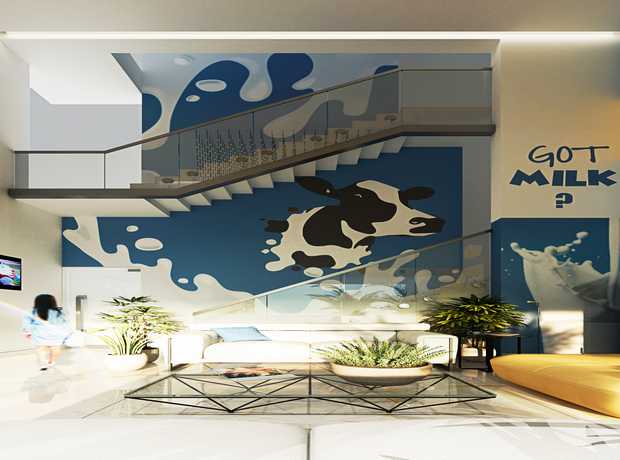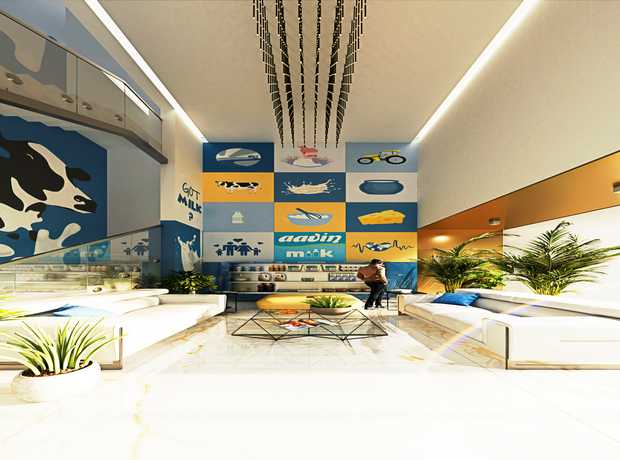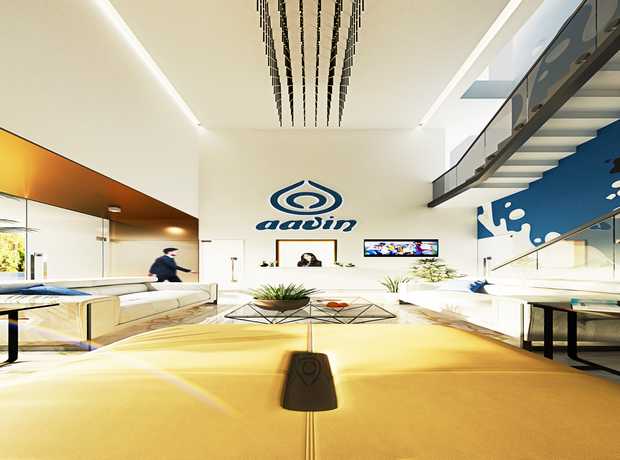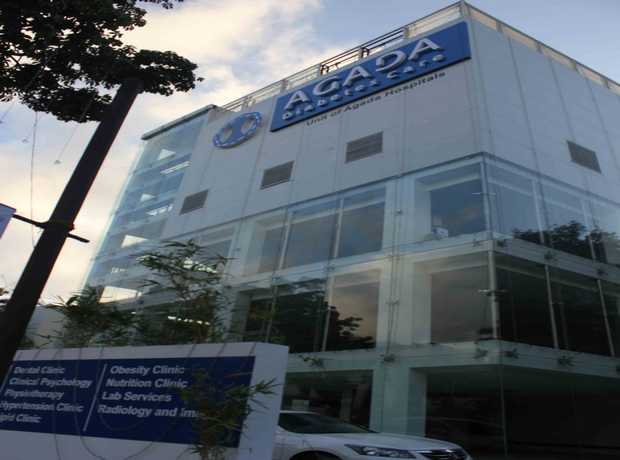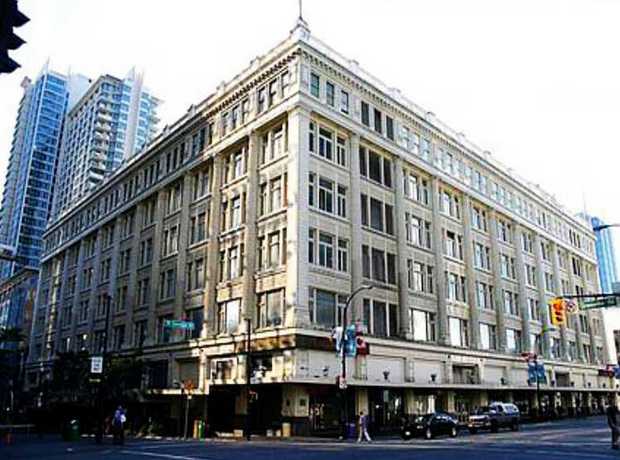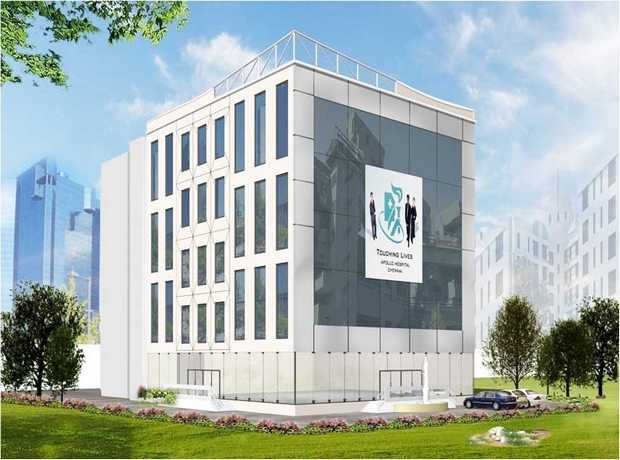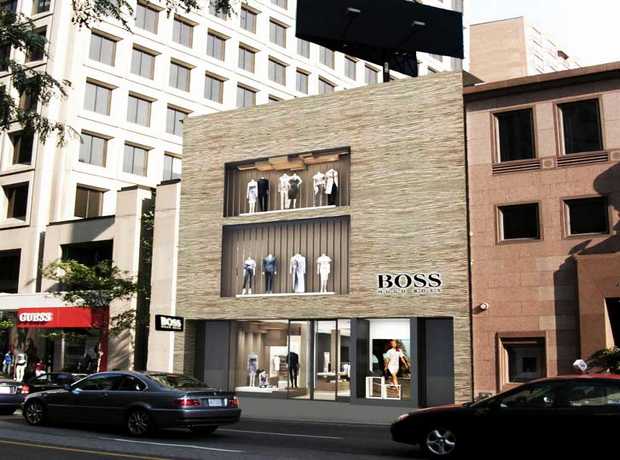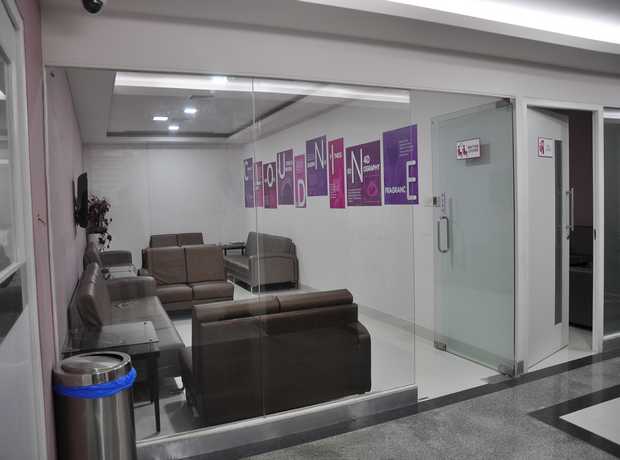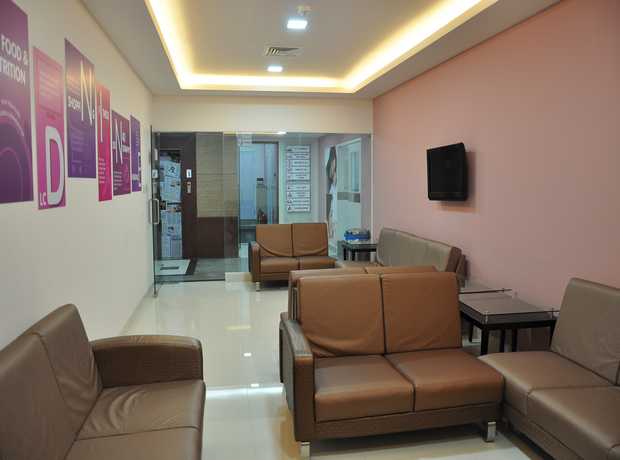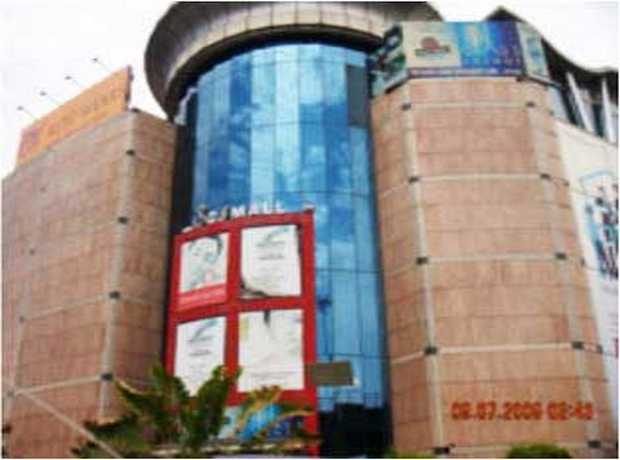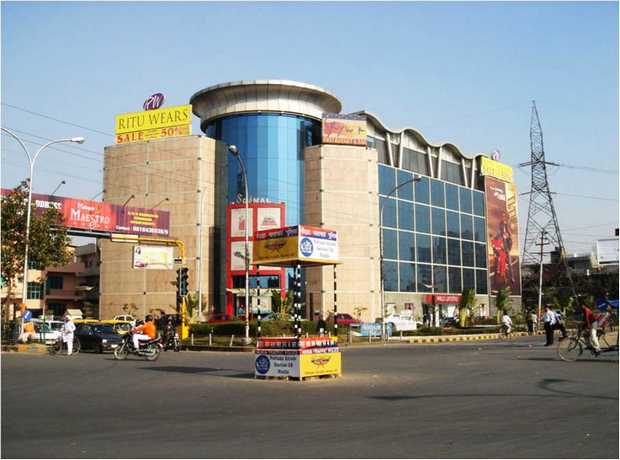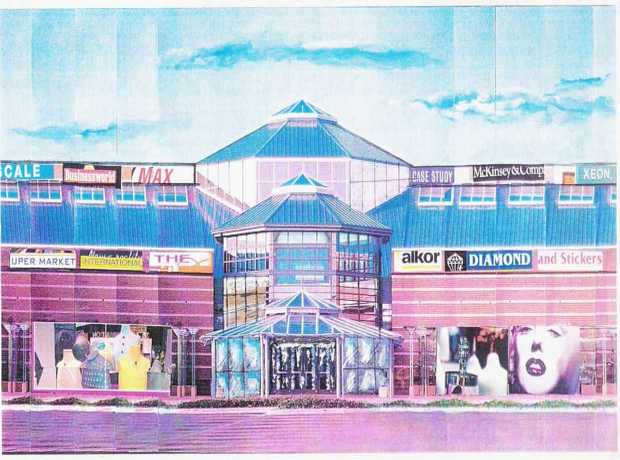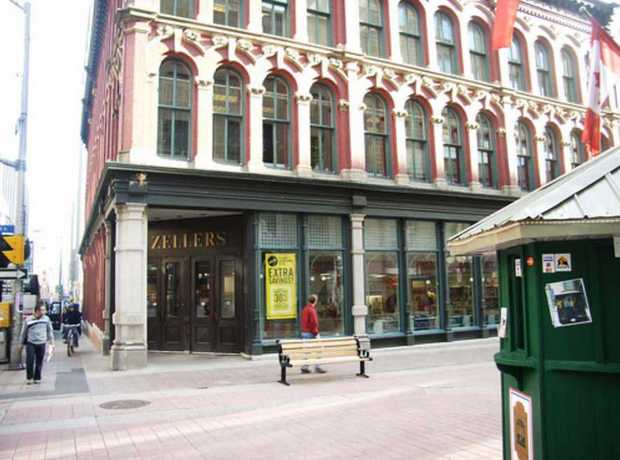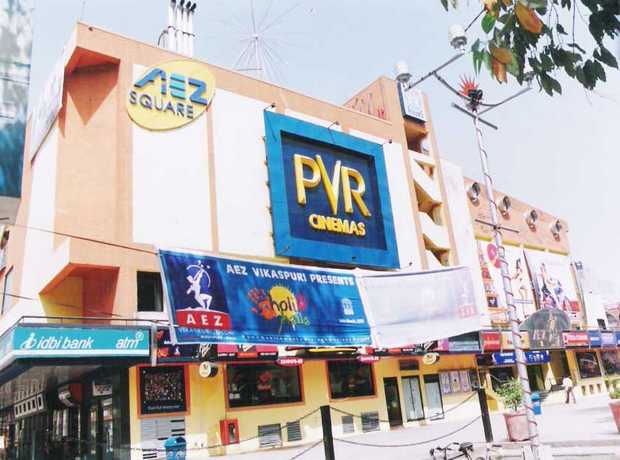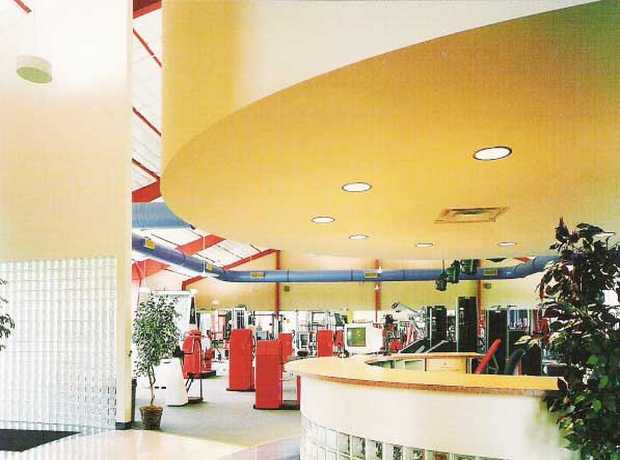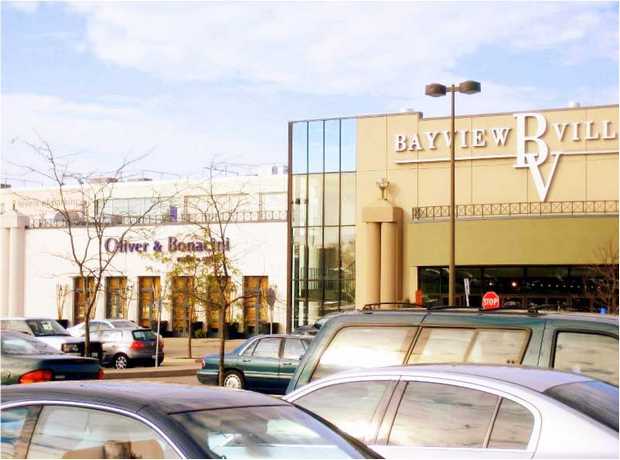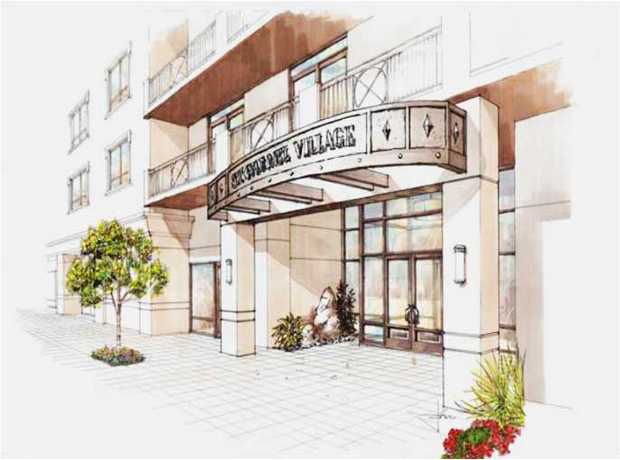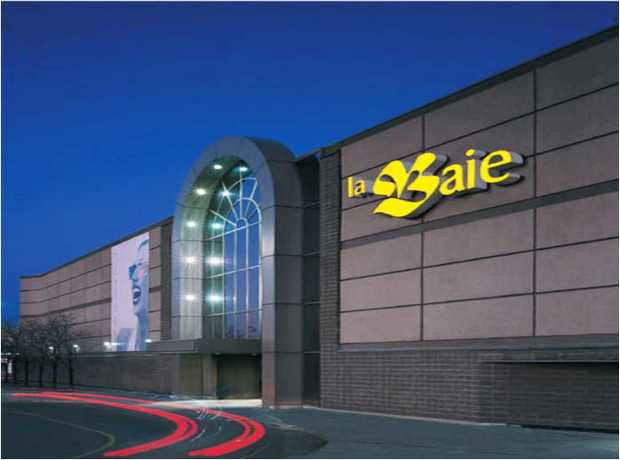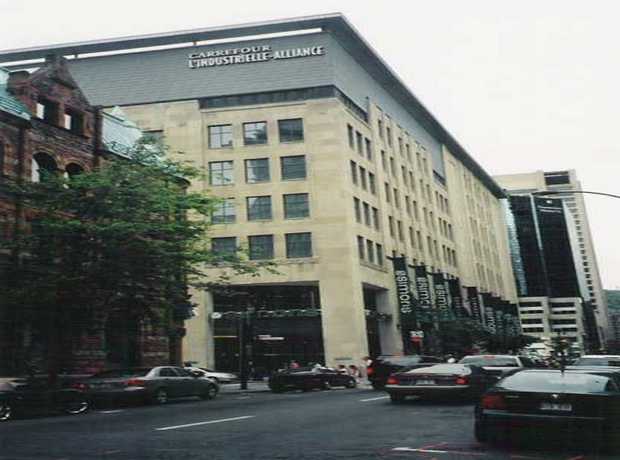The healthcare sector in Hyderabad is not merely growing; it’s undergoing a profound transformation. As a major medical hub in India, the city is witnessing an unprecedented demand for world-class healthcare infrastructure that is both advanced and accessible. Within this dynamic environment, the foundational elements of a hospital – specifically its flooring and surface solutions – are emerging as critical considerations. These aren’t just aesthetic choices; they are fundamental to maintaining stringent hygiene standards, ensuring the paramount safety of patients and staff, optimizing operational efficiency, and creating a healing environment. This comprehensive article delves deep into the cutting-edge trends and pivotal considerations for affordable hospital flooring and surface solutions in Hyderabad, offering a forward-looking perspective into what healthcare providers, architects, and developers can anticipate in 2025 and beyond.
The strategic selection of flooring in healthcare facilities is a complex undertaking, balancing initial investment with long-term performance, regulatory compliance, and the unique demands of a medical setting. As Hyderabad continues its trajectory as a healthcare leader, the emphasis shifts towards solutions that are not only innovative and resilient but also fiscally prudent. This means exploring materials and installation methods that offer superior performance without compromising on budget. Understanding these nuances is crucial for any stakeholder involved in the design or upgrade of healthcare spaces in the region.
Why Affordable Hospital Flooring & Surface Solutions Matter Critically in Hyderabad
In a bustling metropolis like Hyderabad, where healthcare accessibility and quality are non-negotiable, striking the perfect balance between high standards and economic viability is a constant challenge. Affordable hospital flooring and surface solutions transcend mere cost savings; they are integral components that underpin the very operational and ethical framework of a healthcare institution. Their importance is multifaceted, impacting everything from patient outcomes to staff morale and the financial health of the facility.
- Unwavering Infection Control: The primary battleground in any hospital is against pathogens. Flooring plays a monumental role in minimizing the spread of bacteria, viruses, and fungi. Non-porous, seamless, and easily cleanable surfaces are essential barriers against healthcare-associated infections (HAIs), safeguarding vulnerable patients and medical personnel. An effective flooring strategy contributes significantly to a sterile environment, particularly in critical zones.
- Enhanced Patient and Staff Safety: Slips, trips, and falls remain a leading cause of injuries in healthcare settings. Flooring solutions with appropriate slip resistance are paramount, especially in high-traffic areas, wet zones (like bathrooms and operating theaters), and corridors. Beyond physical safety, the ergonomic properties of flooring can reduce fatigue for staff who spend long hours on their feet, thereby improving their comfort and focus.
- Uncompromised Durability and Longevity: Hospitals are environments of relentless activity. Flooring must withstand constant foot traffic, heavy equipment movement, chemical spills, and rigorous cleaning regimens. Investing in durable, high-quality materials, even if initially slightly more expensive, translates into reduced repair and replacement costs, significantly lowering the total lifecycle cost of the flooring. This long-term perspective is fundamental to true affordability.
- Creating a Welcoming and Healing Aesthetic: The psychological impact of a hospital environment on patients and visitors cannot be overstated. Thoughtfully chosen flooring, with appropriate colors, patterns, and textures, can create a calming, professional, and comforting atmosphere. It contributes to biophilic design principles, aids in wayfinding, and can even reduce patient anxiety, fostering a more positive healing journey.
- Operational Efficiency and Maintenance Savings: Easy-to-clean and low-maintenance flooring reduces the time and resources dedicated to housekeeping. Seamless installations, stain-resistant properties, and robust finishes mean fewer labor hours, less consumption of cleaning agents, and a more efficient allocation of hospital resources, directly impacting operational budgets.
By prioritizing these factors, healthcare facilities in Hyderabad can ensure that their flooring investments are not just expenditures but strategic enhancements that deliver tangible benefits across all facets of hospital operations.
Key Trends Shaping Hospital Flooring & Surface Solutions in Hyderabad for 2025
As we approach 2025, several pivotal trends are set to redefine the landscape of hospital flooring and surface solutions in Hyderabad. These trends are driven by technological advancements, environmental consciousness, evolving healthcare demands, and a deeper understanding of patient and staff needs.
1. The Ascendancy of Sustainability and Eco-Friendly Materials
Hyderabad, much like other progressive global cities, is increasingly prioritizing environmental responsibility across all sectors, and healthcare infrastructure is no exception. The push towards eco-friendly solutions for hospital flooring is gaining significant momentum. This trend is not merely about adhering to green building certifications; it’s about minimizing the environmental footprint, reducing exposure to volatile organic compounds (VOCs), and promoting healthier indoor air quality for patients and staff. Expect to see a substantial rise in the adoption of sustainable flooring materials that are not only durable and high-performing but also environmentally responsible throughout their entire lifecycle.
This includes innovative options such as:
- Recycled Rubber Flooring: Made from post-consumer or post-industrial rubber, these floors offer exceptional durability, impact absorption, and acoustic properties, making them ideal for high-traffic areas and reducing ambient noise.
- Bio-based and PVC-free Materials: Advancements in material science are leading to linoleum made from natural, renewable raw materials (linseed oil, wood flour, jute, cork) and other bio-based resilient floorings that perform comparably to traditional options without the environmental concerns associated with PVC.
- Modular and Recyclable Tiles: The shift towards modular flooring systems (e.g., carpet tiles, LVT) allows for easier replacement of damaged sections, reducing waste. Furthermore, manufacturers are focusing on creating products that can be recycled at the end of their useful life.
- Low VOC Emissions: Products with low or zero VOC emissions are becoming standard, contributing significantly to improved indoor air quality, which is crucial for patient recovery and staff well-being, especially for those with respiratory sensitivities.
Hospitals are actively seeking materials that hold certifications from recognized bodies, ensuring their claims of sustainability are verified. This commitment to sustainability is seen as a long-term investment in community health and environmental stewardship.
2. Digital Delivery and BIM Integration for Precision and Efficiency
The future of construction and infrastructure management, especially in complex healthcare projects, is unequivocally digital. The integration of Building Information Modeling (BIM) into the design, planning, and execution phases of hospital flooring projects will become a standard practice in Hyderabad. BIM is a process supported by various tools, technologies, and contracts involving the generation and management of digital representations of physical and functional characteristics of places. This sophisticated approach will streamline the entire project lifecycle, leading to unprecedented cost efficiencies, minimized errors, and significantly improved project management for hospital flooring installations in Hyderabad.
Key benefits of BIM integration include:
- Enhanced Design Visualization and Collaboration: BIM allows for 3D modeling of flooring layouts, enabling architects, designers, and hospital administrators to visualize the final outcome, detect clashes with other building systems (MEP, structural), and make informed decisions before construction begins.
- Accurate Material Quantity Take-offs: By creating a precise digital model, BIM helps in generating accurate material lists, reducing waste, and ensuring that the right quantities of flooring materials are ordered, which is a crucial aspect of achieving affordable hospital flooring.
- Improved Project Scheduling and Logistics: BIM models can integrate with project management software to optimize installation schedules, plan material delivery, and minimize disruption to ongoing hospital operations, which is especially critical in renovation projects.
- Lifecycle Management and Maintenance Planning: Beyond initial installation, BIM provides a rich data source for facility management. Information about flooring specifications, installation dates, warranty details, and maintenance schedules can be stored and easily accessed, facilitating proactive maintenance and extending the lifespan of the flooring.
- Cost Prediction and Control: With precise data and simulations, BIM aids in more accurate cost estimations and allows for scenario planning to identify the most cost-effective solutions without compromising quality. This digital foresight is invaluable for project budgeting in healthcare.
Embracing digital delivery methods is not just about adopting new software; it’s about a fundamental shift in how projects are conceived, managed, and executed, ultimately delivering superior results for healthcare facilities in Hyderabad.
3. Prioritizing Uncompromising Infection Control Through Advanced Flooring
The lessons learned from global health crises have permanently etched the importance of stringent infection control into the fabric of healthcare design. For 2025, antimicrobial flooring solutions will be in exceptionally high demand across Hyderabad’s hospitals. These advanced surfaces are engineered to actively inhibit the growth of bacteria, fungi, and other microorganisms, playing a vital role in maintaining a sterile and hygienic environment, particularly in sensitive and critical areas like Intensive Care Units (ICUs), Operating Theaters (OTs), isolation rooms, and laboratories.
Effective infection control through flooring encompasses several characteristics:
- Antimicrobial Additives: Many modern flooring materials incorporate silver-ion technology or other antimicrobial agents directly into their composition, providing continuous protection against microbial growth even between cleanings.
- Seamless Installation: The elimination of seams, especially in sheet flooring materials like vinyl or linoleum, prevents the accumulation of dirt, moisture, and pathogens in crevices, making cleaning more effective and reducing harboring spots for microbes. Resinous (epoxy) flooring naturally offers a seamless, monolithic surface.
- Non-Porous and Impermeable Surfaces: Materials that do not absorb liquids or harbor microorganisms are crucial. These surfaces are easy to disinfect and resist staining from medical spills.
- Chemical Resistance: Hospital floors are subjected to harsh cleaning agents and disinfectants. The chosen flooring must withstand repeated exposure to these chemicals without degradation, discoloration, or loss of protective properties.
For hospitals in Hyderabad seeking to implement the most effective infection control measures through strategic flooring choices, partnering with experienced specialists is crucial. Contact Skydome Designs to learn more about implementing effective infection control measures through strategic flooring choices. Their expertise in healthcare interiors ensures that flooring solutions are not only aesthetically pleasing but also meet the highest standards of hygiene and patient safety, a fundamental pillar of modern healthcare design.
4. Enhanced Durability and Strategic Focus on Low Lifecycle Costs
In the high-demand environment of a hospital, flooring is subjected to extreme wear and tear. Constant foot traffic from patients, visitors, and staff, the movement of heavy medical equipment, beds, and carts, and frequent rigorous cleaning all contribute to accelerated degradation if the wrong materials are chosen. Therefore, future-ready flooring options for Hyderabad’s hospitals in 2025 will place a premium on superior durability and an overarching strategy to minimize lifecycle costs.
Minimizing lifecycle costs is a sophisticated approach that looks beyond the initial purchase price, considering all costs associated with the flooring over its entire operational life. This includes installation, maintenance (daily cleaning, periodic deep cleaning, waxing/buffing), repairs, and eventual replacement. Investing in flooring that offers superior durability and requires less maintenance translates into significant savings in the long run, making it a truly affordable hospital flooring solution.
Key characteristics contributing to low lifecycle costs:
- High Abrasion Resistance: Essential for areas with heavy foot and wheeled traffic, preventing premature wear and tear.
- Stain and Chemical Resistance: Reduces the need for aggressive cleaning, prolongs the floor’s appearance, and prevents damage from spills common in healthcare settings.
- Ease of Cleaning and Maintenance: Smooth, non-porous surfaces that are easy to sweep, mop, and disinfect reduce labor costs and cleaning supply consumption.
- Longevity and Warranty: Materials with extended lifespans and comprehensive warranties offer peace of mind and protection against premature failure.
- Repairability: Some flooring types are easier to repair in sections, avoiding the need for full area replacement if damage occurs.
By meticulously evaluating these factors, healthcare providers can make informed decisions that deliver maximum value, ensuring their flooring investments contribute to operational efficiency and long-term financial health.
5. Optimized ICU Layouts and Intuitive Wayfinding through Flooring Design
Flooring is more than just a surface; it is a powerful design element that can profoundly influence human perception, behavior, and movement within a space. In the context of hospitals, especially critical areas like ICUs and emergency departments, flooring plays a critical role in defining distinct zones, aiding in efficient workflow, and guiding individuals through complex environments. Expect to see innovative flooring designs that are strategically integrated to optimize ICU layout and significantly improve wayfinding within hospitals.
How flooring aids in design and navigation:
- Zoning and Spatial Definition: Different colors, patterns, or textures of flooring can visually demarcate various functional zones within a hospital. For instance, a specific flooring type might indicate patient rooms versus nurse stations, or sterile corridors versus public waiting areas in an ICU. This helps streamline workflows and maintain appropriate boundaries.
- Directional Cues and Pathways: Strategically placed lines, arrows, or distinct patterns embedded in the flooring can act as intuitive visual cues, guiding patients, visitors, and staff along specific pathways to departments, exits, or critical care units. This is particularly valuable in large, complex facilities, reducing stress and improving efficiency.
- Color Psychology and Mood: The choice of flooring color can influence the psychological atmosphere of a space. Calming blues and greens might be used in patient recovery areas, while brighter, more active colors could delineate pediatric zones or activity areas.
- Safety Striping and Warning Zones: In areas requiring caution, such as around equipment, changes in elevation, or hazardous material zones, flooring can incorporate high-contrast markings or textured surfaces to alert individuals to potential risks.
- Biophilic Design Integration: Flooring can incorporate natural patterns, colors, and textures that connect occupants with nature, contributing to a more calming and healing environment, aligning with the growing trend of biophilic design in healthcare.
These thoughtful design considerations elevate flooring from a mere functional element to an integral part of the hospital’s operational and healing philosophy, enhancing the experience for everyone who interacts with the facility.
Expanding the Horizon: Types of Affordable Hospital Flooring Materials for Hyderabad
The quest for affordable hospital flooring and surface solutions in Hyderabad doesn’t mean compromising on quality or functionality. It involves selecting the right material for the right application, considering initial cost, lifecycle cost, and performance characteristics. Here’s an expanded look at some of the most viable and popular options:
Vinyl Flooring (PVC)
Vinyl remains a cornerstone in healthcare flooring due to its versatility, performance, and cost-effectiveness. It’s available in several forms:
- Homogeneous Vinyl: Composed of a single layer, offering exceptional durability and wear resistance. Its uniform composition means that scratches and dents don’t show as easily, and it can be easily repaired through heat welding. It’s often chosen for high-traffic areas and requires minimal maintenance once properly installed and sealed.
- Heterogeneous Vinyl: Made of multiple layers, including a printed design layer and a clear wear layer. This allows for a vast array of aesthetic options, mimicking wood, stone, or abstract patterns. It offers good durability and is often more comfortable underfoot.
- Luxury Vinyl Tile (LVT) / Luxury Vinyl Plank (LVP): These modular options replicate natural materials with high fidelity. While potentially higher in initial cost than sheet vinyl, their modular nature allows for easy replacement of damaged tiles, reducing long-term repair costs and minimizing disruption during renovation.
Benefits: Excellent infection control when seams are heat-welded, highly resistant to moisture and chemicals, easy to clean, good durability, wide range of colors and patterns, and generally a lower initial cost. Many vinyl products now feature low VOC emissions and are recyclable.
Linoleum Flooring
Often confused with vinyl, linoleum is a distinct, natural product made from linseed oil, pine rosin, wood flour, cork dust, and jute backing. It’s experiencing a resurgence, especially with the focus on sustainability.
- Natural and Sustainable: Made from rapidly renewable resources, it’s inherently eco-friendly and biodegradable.
- Bacteriostatic Properties: Linseed oil naturally inhibits bacterial growth, making it an excellent choice for healthcare settings seeking inherent infection control features.
- Durability: With proper maintenance, linoleum can last for decades, developing a natural patina over time. It’s resistant to indentation and heavy loads.
Benefits: Excellent for sustainability goals, bacteriostatic, durable, good acoustic properties, comes in various colors, and offers consistent performance throughout its thickness.
Epoxy/Resinous Flooring
These are seamless, poured-in-place systems that create a monolithic surface ideal for areas demanding the highest levels of hygiene and chemical resistance.
- Seamless and Non-Porous: Eliminates grout lines and crevices where bacteria can harbor, making it incredibly easy to clean and disinfect. Ideal for operating theaters, laboratories, and sterile corridors.
- Chemical and Abrasion Resistance: Highly resistant to a wide range of chemicals, solvents, and heavy physical abuse, ensuring longevity in demanding environments.
- Customizable: Available in various colors, textures, and even with decorative flakes, allowing for aesthetic versatility. Can incorporate slip-resistant aggregates.
Benefits: Superior infection control, exceptional durability, chemical resistance, slip resistance (with additives), and aesthetic flexibility.
Rubber Flooring
Rubber flooring, whether natural or recycled, offers a unique set of benefits particularly suited for certain hospital areas.
- Ergonomics and Comfort: Its inherent elasticity provides excellent underfoot comfort, reducing fatigue for staff who are on their feet for long shifts. It also offers good impact absorption.
- Sound Absorption: Excellent at reducing ambient noise, contributing to a quieter, more healing environment, especially beneficial in corridors and waiting areas.
- Durability and Slip Resistance: Highly durable, resistant to cigarette burns, and offers superior slip resistance, even when wet.
Benefits: Ergonomic, sound-absorbent, highly durable, sustainable options available, good slip resistance, and easy to maintain.
Critical Factors to Consider When Choosing Hospital Flooring in Hyderabad
The selection of flooring for a healthcare facility in Hyderabad is a multi-criteria decision that extends far beyond aesthetics and initial cost. It requires a holistic understanding of the hospital’s specific needs, regulatory requirements, and long-term operational goals. To ensure optimal outcomes, several critical factors must be meticulously evaluated.
1. Traffic Volume and Type
Different areas within a hospital experience varying levels and types of traffic. Main corridors, waiting areas, and emergency departments endure constant heavy foot traffic and wheeled equipment. Patient rooms, on the other hand, might see moderate traffic. The chosen flooring must match the expected load, with high-wear areas requiring more robust, abrasion-resistant materials. For example, a resilient homogeneous vinyl might be ideal for corridors, while LVT could be suitable for administrative offices or patient waiting lounges.
2. Specific Area Requirements and Functionality
Each zone in a hospital has unique functional demands that dictate flooring choices:
- Operating Theaters (OTs) & ICUs: Demand seamless, non-porous, chemical-resistant, and intensely hygienic surfaces (e.g., epoxy, heat-welded homogeneous vinyl) to prevent pathogen growth and withstand rigorous disinfection. Anti-static properties may also be crucial.
- Patient Wards: Require flooring that is quiet (for patient comfort), easy to clean, aesthetically pleasing, and provides good underfoot comfort for staff. Slip resistance is also key.
- Laboratories: Need highly chemical-resistant, stain-proof, and seamless flooring to handle spills and provide a sterile environment (epoxy is often preferred).
- Corridors & Waiting Areas: Must be extremely durable, highly resistant to abrasion, easy to navigate (wayfinding), and offer some acoustic dampening.
- Cafeterias & Kitchens: Require grease-resistant, slip-resistant, and easy-to-clean surfaces.
- Physiotherapy & Rehabilitation Areas: Benefit from ergonomic, impact-absorbing, and slip-resistant flooring (e.g., rubber flooring).
3. Chemical Resistance
Hospital floors are routinely exposed to a wide array of harsh cleaning agents, disinfectants, medications, and bodily fluids. The flooring material must be chemically inert and resistant to degradation, staining, or discoloration from these substances to maintain its integrity and appearance over time. This is a non-negotiable requirement for healthcare flooring.
4. Slip Resistance
Preventing slips and falls is a top priority for patient and staff safety. Flooring must meet specific slip-resistance standards, especially in areas prone to moisture (e.g., bathrooms, kitchens, entranceways, and emergency departments). Textured surfaces or anti-slip additives can be incorporated to enhance friction without compromising cleanability.
5. Sound Absorption and Acoustics
A quiet environment is crucial for patient recovery and staff concentration. Hard, reflective surfaces can amplify noise, leading to a stressful atmosphere. Flooring with good sound-absorbing properties (e.g., rubber, specialized resilient vinyl with acoustic backing) can significantly contribute to a calmer, more healing environment by reducing impact noise and ambient sound levels.
6. Thermal Comfort and Ergonomics
While often overlooked, the thermal properties of flooring can impact perceived comfort. Some materials can feel colder to the touch. More importantly, ergonomic properties, such as underfoot resilience, can reduce fatigue for healthcare workers who spend long hours standing and walking. Rubber and certain resilient vinyls excel in this aspect.
7. Ease of Maintenance and Cleaning Protocols
The chosen flooring must align with the hospital’s stringent cleaning and disinfection protocols. Surfaces that are easy to clean, require minimal specialized maintenance, and resist staining will significantly reduce operational costs and ensure consistent hygiene. Seamless installations are paramount for effective cleaning.
8. Installation Time and Potential Disruption
For renovation projects, minimizing disruption to hospital operations is critical. Some flooring systems allow for faster installation or can be installed in phases. Understanding the curing times for materials like epoxy is essential to plan downtime effectively and ensure patient care is not impacted.
9. Budget: Initial Cost vs. Lifecycle Cost
While initial purchase and installation costs are important, the true “affordability” of hospital flooring lies in its lifecycle cost. A seemingly cheaper material might incur higher maintenance costs, require frequent repairs, or need premature replacement. Conversely, a higher upfront investment in a durable, low-maintenance material can lead to significant savings over 10-20 years, underscoring the importance of a long-term economic perspective.
10. Regulatory Compliance and Certifications
Hospitals in Hyderabad must adhere to national and international healthcare facility standards, such as those set by the National Accreditation Board for Hospitals & Healthcare Providers (NABH) in India, and potentially international guidelines like JCI (Joint Commission International). Flooring materials must meet fire safety codes, indoor air quality standards (low VOCs), and specific hygiene requirements. Collaborating with a healthcare architect ensures that all regulatory aspects are meticulously addressed in flooring selection.
The Indispensable Role of Hospital Interior Design in Flooring Selection
Flooring is not an isolated element; it is an integral part of the overarching hospital interior design scheme. The design choices for flooring profoundly influence the entire aesthetic, functional, and psychological atmosphere of a healthcare facility. A well-conceived hospital interior design integrates flooring seamlessly with wall finishes, lighting, furniture, and spatial planning to create environments that are not only efficient and hygienic but also deeply supportive of healing and well-being.
In Hyderabad’s competitive healthcare market, superior interior design contributes to:
- Biophilic Design Integration: Incorporating natural patterns, colors, and textures through flooring can connect occupants with the natural world, reducing stress and promoting recovery. For example, wood-look LVT or linoleum in earthy tones can evoke a sense of calm.
- Patient Psychology and Comfort: Colors and patterns in flooring can affect mood. Softer, warmer tones can create a comforting atmosphere in patient rooms, while brighter, engaging patterns can be used in pediatric areas. The tactile experience of flooring also contributes to comfort.
- Staff Well-being and Productivity: Ergonomic flooring (like rubber or cushioned vinyl) reduces physical fatigue for staff, enhancing their comfort and focus over long shifts. A visually appealing and well-designed environment can also boost morale and reduce stress.
- Branding and Identity: Flooring choices, especially in lobbies and public areas, contribute to the hospital’s brand identity. High-quality, thoughtfully designed flooring communicates professionalism, care, and attention to detail.
- Holistic Healthcare Planning: The healthcare architect and interior designer work hand-in-hand to ensure that flooring selections support the overall healthcare planning goals, from patient flow to clinical efficiency and infection control. Their expertise ensures that every design decision, including flooring, contributes to the hospital’s mission of providing optimal care.
By recognizing flooring as a critical design element, hospitals can create spaces that truly reflect their commitment to advanced patient care and a positive healing journey.
Installation Best Practices for Hospital Flooring in Hyderabad
Even the most advanced and durable flooring material will fail prematurely if not installed correctly. For hospitals in Hyderabad, where operational continuity and hygiene are paramount, adhering to stringent installation best practices is non-negotiable. Proper installation is a key component in ensuring the long-term affordability and performance of any flooring system.
- Thorough Subfloor Preparation: This is perhaps the most critical step. The subfloor must be clean, dry, level, smooth, and free of contaminants. Any imperfections will telegraph through the new flooring over time. Moisture mitigation is crucial, especially in Hyderabad’s climate, to prevent issues like bubbling, delamination, and mold growth.
- Skilled and Certified Installers: Hospital flooring requires specialized knowledge and precision. Installers must be experienced in working with specific materials (e.g., heat welding vinyl, pouring epoxy) and understand the unique demands of a healthcare environment, including working around active hospital operations.
- Seamless Installation Techniques: For resilient sheet goods, heat welding of seams is vital to create a monolithic, impervious surface that is easy to clean and prevents pathogen ingress. For epoxy systems, a truly seamless pour is essential.
- Proper Adhesives and Curing Times: Using the manufacturer-recommended adhesives and allowing adequate curing time is crucial for the longevity and performance of the flooring. Rushing this process can lead to adhesive failure, particularly in high-traffic or chemically exposed areas.
- Minimizing Disruption: In active healthcare facilities, installation must be planned meticulously to minimize noise, dust, and odors, and to ensure patient and staff safety. This often involves phased installations, off-hour work, and stringent containment measures.
- Post-Installation Care and Handover: Providing clear guidelines for immediate post-installation care, cleaning, and maintenance schedules to the hospital’s facilities management team is essential for preserving the flooring’s integrity and appearance from day one.
Partnering with a firm that adheres to these rigorous installation standards is crucial for realizing the full benefits of your flooring investment.
Maintenance and Cleaning Protocols: Ensuring Long-term Performance and Hygiene
The initial choice and installation of hospital flooring set the stage, but consistent and correct maintenance is what truly ensures its longevity, appearance, and ability to contribute to infection control. Hospitals in Hyderabad must implement robust and clear cleaning protocols specifically tailored to their chosen flooring types. An effective maintenance strategy directly impacts the lifecycle cost, keeping surfaces hygienic and aesthetically pleasing for years.
- Material-Specific Cleaning: Different flooring materials require different cleaning agents and methods. For instance, harsh abrasives suitable for concrete might damage linoleum or vinyl. Manufacturers provide detailed guidelines that must be strictly followed to prevent damage and maintain warranty validity.
- Daily Cleaning Regimen: Regular sweeping, dust mopping, and damp mopping with neutral pH cleaners are essential to remove surface dirt and contaminants. High-traffic areas may require more frequent cleaning.
- Periodic Deep Cleaning: Depending on the material and traffic, periodic deep cleaning, scrubbing, and stripping/re-polishing (for some resilient floors) are necessary to remove embedded dirt and restore the floor’s finish.
- Immediate Spill Response: All spills, especially medical or chemical spills, must be cleaned immediately to prevent staining and chemical damage, and to maintain a safe environment. Specific protocols for different types of spills should be in place.
- Seamless Surface Advantage: One of the primary benefits of seamless flooring (like heat-welded vinyl or epoxy) is the ease of cleaning. Without grout lines or crevices, dirt and pathogens have nowhere to hide, making disinfection far more effective.
- Use of Appropriate Equipment: Utilizing proper cleaning equipment, such as auto scrubbers with appropriate pads/brushes and HEPA-filtered vacuums, contributes to efficiency and air quality.
- Staff Training: Healthcare facility cleaning staff must be thoroughly trained not only in general hygiene but also in the specific care requirements for each type of flooring installed across the hospital.
By prioritizing comprehensive maintenance and cleaning protocols, hospitals can significantly extend the lifespan of their flooring, maintain optimal hygiene, and ensure their initial investment remains truly affordable over time.
Hyderabad’s Unique Healthcare Context: Challenges and Opportunities
Hyderabad stands as a beacon in India’s healthcare landscape, characterized by rapid expansion, technological adoption, and a diverse patient demographic. This unique context presents both challenges and unparalleled opportunities for the implementation of advanced and affordable hospital flooring and surface solutions.
- Growth of Healthcare Infrastructure: The city has seen a surge in new hospital constructions, medical colleges, specialized clinics, and diagnostic centers. This growth drives demand for scalable, high-quality, and cost-effective building materials, including flooring. Both large multi-specialty hospitals and smaller boutique clinics require tailored solutions.
- Government Initiatives and Investment: State government initiatives to enhance public health infrastructure, coupled with robust private sector investment, fuel innovation and encourage the adoption of global best practices in facility design and construction. This creates an environment conducive to innovative flooring solutions.
- Diverse Patient Demographics: Hyderabad serves a wide range of patients, from local residents to medical tourists seeking specialized treatments. This necessitates facilities that are welcoming, accessible, and meet international standards, with flooring playing a role in universal design and patient comfort.
- Climate Considerations: Hyderabad’s semi-arid climate, with hot summers and moderate winters, influences material choices, especially concerning thermal expansion/contraction and potential for moisture issues. Flooring solutions must be chosen to withstand these local conditions.
- Competitive Market: The presence of numerous healthcare providers means a competitive market. Hospitals are constantly looking for ways to differentiate themselves through superior facilities, which includes investing wisely in critical infrastructure elements like flooring to offer better patient experience and operational efficiency without exorbitant costs.
- Skilled Labor Availability: While Hyderabad has a strong construction sector, finding highly skilled labor specifically trained in advanced hospital flooring installation techniques can be a challenge. Partnering with experienced firms ensures access to qualified professionals.
Navigating these challenges and leveraging opportunities requires local expertise and a deep understanding of the Hyderabad market, ensuring that flooring choices are both relevant and forward-thinking.
Choosing the Right Partner for Hospital Flooring & Surface Solutions in Hyderabad
The success of any hospital construction or renovation project, particularly concerning crucial elements like flooring, hinges significantly on selecting the right implementation partner. A truly effective partnership goes beyond mere material supply; it involves strategic guidance, impeccable execution, and unwavering support. When seeking a partner for affordable hospital flooring and surface solutions in Hyderabad, look for a company that demonstrates:
- Extensive Experience in Healthcare Projects: A deep portfolio of completed hospital and healthcare projects is indicative of specialized knowledge. This includes understanding the unique regulatory, hygienic, and operational demands of medical environments.
- A Proven Track Record of On-Time and On-Budget Delivery: Delays and cost overruns are detrimental in healthcare. A reliable partner adheres to agreed-upon timelines and budgets, ensuring seamless project execution.
- Expertise in Hospital Interior Design and Healthcare Planning: The best flooring solutions are integrated into a holistic design strategy. A partner with in-house design capabilities can ensure flooring choices align with overall aesthetics, functionality, and patient experience goals.
- A Commitment to Sustainable and Innovative Solutions: As highlighted by the 2025 trends, sustainability and technological innovation are key. Look for a partner who offers a range of eco-friendly materials and embraces digital tools like BIM.
- Transparent Processes and Communication: Clear communication, detailed reporting, and transparent cost structures foster trust and ensure all stakeholders are informed throughout the project lifecycle.
- Post-Occupancy Support: A truly committed partner offers support beyond handover, including guidance on maintenance and addressing any post-installation concerns.
Skydome Designs offers end-to-end delivery for affordable hospital flooring and surface solutions in Hyderabad, encompassing strategy, design, construction, and handover. With an award-winning team, transparent costs, and milestone-based reporting, they ensure project success. Contact Skydome Designs today to discuss your project needs. Their comprehensive approach ensures that every aspect, from initial concept to final execution, is handled with precision and expertise.
Why Skydome Designs is Your Unrivaled Partner for Hospital Flooring & Interior Solutions in Hyderabad
Skydome Designs Pvt Ltd stands as a preeminent architecture and interior design firm in India, boasting nearly three decades of unparalleled experience, with a distinct and recognized specialization in hospital and healthcare interiors. Their deep understanding of the intricate demands of medical facilities positions them as the ideal partner for any healthcare infrastructure project in Hyderabad and beyond.
What We Deliver: Comprehensive Solutions Across Healthcare and Beyond:
- Hospital Interior Design: From critical patient rooms to high-tech ICUs, sterile OTs, advanced laboratories, welcoming consultation areas, and meticulous facility planning for optimized care delivery, Skydome Designs crafts environments that prioritize patient well-being, staff efficiency, and stringent hygiene. They understand that every surface, every layout, directly impacts the quality of care.
- Residential Projects: Beyond healthcare, their expertise extends to creating inspiring living spaces, including apartments, luxury condos, specialized senior housing, and community-focused interiors that blend comfort with modern aesthetics.
- Retail & Commercial Design: Skydome Designs also excels in dynamic retail and commercial spaces, including shopping malls, sophisticated mixed-use developments, corporate offices, and engaging entertainment centers, demonstrating their versatile design prowess.
- Interior Solutions: Their capabilities span holistic interior solutions, encompassing meticulous space planning, ergonomic furniture layouts, innovative lighting design, and seamless turnkey interior execution, ensuring a cohesive and functional outcome.
Why Partner with Skydome Designs: A Legacy of Excellence and Trust:
- 29+ Years of Unmatched Experience: With a rich history spanning almost three decades, Skydome Designs brings a wealth of knowledge and expertise gleaned from projects across India and internationally. This extensive experience translates into robust, future-proof designs.
- In-house Multidisciplinary Team: They house a powerhouse team of dedicated architects, specialized healthcare planners, and proficient project managers. This integrated approach ensures seamless coordination, comprehensive understanding of project requirements, and meticulous execution from concept to completion.
- Award-Winning, Client-Focused, and Sustainable Designs: Skydome Designs is not just about aesthetics; their work is recognized with numerous awards for designs that are innovative, highly functional, client-centric, and deeply committed to sustainable practices. They believe in creating spaces that are not only beautiful but also responsible and resilient.
- Projects Delivered On-Time, On-Budget, and to Global Standards: Their track record speaks volumes. Skydome Designs consistently delivers projects punctually, within the allocated budget, and adheres to the highest global standards of quality and construction. This commitment to excellence ensures client satisfaction and project success.
Skydome Designs has successfully delivered 1170+ affordable hospital flooring and surface solutions assignments across Hyderabad and globally over 24+ years. Their on-time delivery rate exceeding 98%, multi-disciplinary reviews, and dedicated post-occupancy support consistently underpin optimal outcomes for every healthcare project. This verifiable track record of numerous successful projects in the very domain of hospital flooring and surface solutions reinforces their position as the leading expert. Furthermore, their commitment goes beyond installation; they offer robust post-occupancy support, ensuring that the chosen solutions continue to perform optimally long after handover. This comprehensive approach from strategy to design, construction, and handover, coupled with an award-winning team, transparent costs, and milestone-based reporting, is what sets Skydome Designs apart in delivering truly exceptional and affordable hospital flooring and surface solutions in Hyderabad.
Contact Skydome Designs today: +91 7299072144 | Email: info@skydomedesigns.com
Conclusion: Investing Wisely in Hyderabad’s Healthcare Future
As Hyderabad’s healthcare sector continues its impressive trajectory of growth and innovation, the demand for intelligent, efficient, and affordable hospital flooring and surface solutions will only intensify. The trends for 2025 underscore a critical shift towards holistic design that integrates sustainability, digital precision, uncompromising infection control, enduring durability, and patient-centric aesthetics. These are not merely individual considerations but interdependent elements that collectively define a truly modern, high-performing healthcare facility.
By proactively embracing sustainable materials, leveraging cutting-edge digital technologies like BIM, and maintaining an unwavering focus on infection control and long-term cost-effectiveness, hospitals in Hyderabad can create environments that are not only safer and more efficient but also profoundly more healing and aesthetically pleasing for both patients and dedicated staff. The strategic selection and impeccable implementation of flooring are fundamental to a hospital’s operational success and its ability to deliver superior patient care.
The complexity and critical nature of hospital flooring projects necessitate collaboration with seasoned experts. Partnering with experienced and reputable firms like Skydome Designs ensures that these sophisticated solutions are not just envisioned but are implemented effectively, precisely, and cost-efficiently. Their extensive experience in healthcare interiors, proven track record of successful deliveries across Hyderabad and globally, and comprehensive end-to-end service offering make them an invaluable ally in navigating the future of healthcare infrastructure.
Making informed decisions about hospital flooring today is an investment in the future well-being of the community and the operational excellence of healthcare institutions. Don’t compromise on quality or expertise when it comes to the foundation of your healthcare facility.
Ready to upgrade your hospital flooring and elevate your facility’s standards? Contact Skydome Designs today for a personalized consultation and discover the perfect, affordable, and future-proof flooring solution tailored to your specific needs and vision.
FAQ: Affordable Hospital Flooring & Surface Solutions in Hyderabad
Here are some frequently asked questions about affordable hospital flooring and surface solutions in Hyderabad, providing detailed insights for healthcare providers and developers.
What are the most genuinely affordable flooring options for hospitals in Hyderabad considering long-term value?
While initial cost is a factor, true affordability comes from lifecycle costs. Homogeneous vinyl flooring and high-quality linoleum are often excellent choices. They offer a superb balance of durability, hygiene, and cost-effectiveness over their lifespan due to low maintenance needs and long wear. Epoxy flooring, while potentially having a higher upfront cost, offers unparalleled durability, seamless infection control, and chemical resistance, which can lead to significant savings on repairs and replacements in critical areas. When making your decision, thoroughly consider factors like expected traffic volume, the specific functional requirements of each area (e.g., surgical vs. administrative), and the long-term maintenance implications rather than just the per-square-foot price.
How can I effectively reduce the lifecycle costs of hospital flooring?
Reducing lifecycle costs involves a strategic approach. Firstly, invest in durable, high-quality materials from reputable manufacturers; these inherently last longer and resist wear. Secondly, choose flooring that is easy to clean and requires minimal specialized maintenance (e.g., no waxing, simple mopping). Seamless installations, as offered by epoxy or heat-welded vinyl, drastically reduce cleaning time and the use of harsh chemicals. Thirdly, ensure professional installation by experienced teams, as poor installation is a leading cause of premature flooring failure. Lastly, implement a consistent and appropriate maintenance regimen. Investing wisely upfront in quality materials and installation, combined with proper care, can save substantial money in the long run by reducing the need for frequent repairs or premature replacements. Always consider flooring options that come with extensive, long-term warranties.
What are the absolute best flooring options for superior infection control in hospitals?
For superior infection control, the key characteristics are non-porosity, seamlessness, and chemical resistance. Epoxy resinous flooring systems are often considered top-tier due to their monolithic, non-porous surface that eliminates all seams and grout lines, preventing microbial harborage. They can also incorporate antimicrobial additives. Homogeneous sheet vinyl and linoleum, when properly heat-welded at the seams and coved up walls, also offer excellent infection control by creating a continuous, easy-to-disinfect surface. Many of these materials are also engineered with inherent antimicrobial properties or can be treated with antimicrobial coatings. Regular and effective cleaning is crucial for any infection-control flooring.
How important is the expertise of the healthcare architect and interior designer in selecting hospital flooring?
The expertise of a specialized healthcare architect and interior designer is paramount, not just important. They possess unique, specialized knowledge of hospital requirements, extending far beyond general building design. This includes an intricate understanding of patient safety protocols, stringent hygiene standards, specific accessibility guidelines, and regulatory compliance (e.g., NABH, JCI standards). Their role is crucial in selecting the most appropriate flooring solutions that meet the highly nuanced needs of a healthcare environment. They understand how flooring impacts clinical workflows, infection pathways, patient psychology, staff fatigue, and overall operational efficiency. They are also adept at integrating flooring choices into a holistic healthcare planning strategy, ensuring aesthetics, functionality, and budget alignment. Without their specialized guidance, hospitals risk making choices that could lead to non-compliance, operational inefficiencies, or compromised patient outcomes.
Are sustainable flooring options truly affordable for hospitals in Hyderabad, or do they come with a premium cost?
Sustainable flooring options are becoming increasingly affordable and offer excellent long-term value, often translating to lower lifecycle costs. While some eco-friendly materials might have a slightly higher upfront cost compared to their conventional counterparts, this is frequently offset by their durability, lower maintenance requirements, and health benefits (e.g., low VOCs improving indoor air quality). For example, linoleum, made from natural materials, is durable, inherently bacteriostatic, and has excellent longevity. Recycled rubber flooring offers robust performance and ergonomic benefits. Furthermore, investing in sustainable materials can contribute to green building certifications, potentially offering incentives or enhancing the hospital’s reputation. The trend in Hyderabad is strongly leaning towards these options as their long-term value proposition becomes clearer.
What considerations are important for flooring in areas with heavy medical equipment traffic?
Areas with heavy medical equipment traffic (e.g., imaging departments, operating theaters, main corridors, logistics areas) require flooring with exceptional load-bearing capacity, indentation resistance, and abrasion resistance. Materials like homogenous vinyl, rubber, and epoxy flooring are highly suitable. They can withstand constant rolling loads from beds, carts, and heavy machinery without denting, scuffing, or showing premature wear. The subfloor preparation in these areas is also critical to ensure a perfectly level and stable base that can support the static and dynamic loads without cracking or movement, thus protecting the integrity of the flooring system.
